
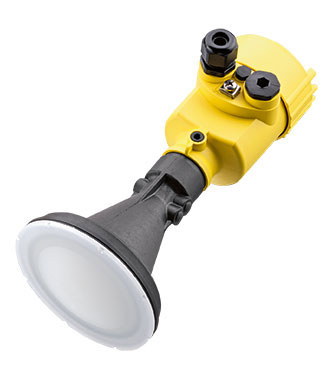
The dog is one of man’s favourite companions. Many dog owners spare no effort in care and want only the very best for their pet. Accordingly, a wide range of dog food is available, from puppy food to senior mixes, as well as products for stomach-sensitive and allergic animals. The product range and the variety of recipes have been growing for years.
In the production of dog food pellets, a manufacturer struggled constantly with an unreliable measuring point. After several different measuring principles failed, a breakthrough was achieved with 80-GHz radar level measurement technology.
The South African company RCL Foods knows exactly what dogs like to eat. This leading African food producer, with over 20 000 employees in subsidiaries in South Africa, Swaziland, Namibia, Botswana and Zambia, not only produces various types of pet food, but has also developed and designed its own production equipment for just that purpose. Yet adding essential oils and fats to the food products has proven to be a very difficult and complex process.
Step by step to the pellet
The basic steps of the pet food process include sourcing raw materials, commingling via a dosing system that involves adding essential vitamins and nutrients, grinding to a specific specification and size, and then mixing. In the next step, the pre-processed product is fed pneumatically via a conveyor line to the extrusion unit. Steam, water and other ingredients are added there to produce many different shapes, sizes and mixes of animal feed.
After extrusion, the product has to be dried according to moisture specifications. When the product leaves the dryer, it gets coated with essential fats and oils. At this point in the process, however, there had always been difficulties, until now. Although this brand new, state-of-the-art facility was designed and built by the company’s own engineering team, one measuring point did not provide readings reliable enough to ensure a smooth, continuous process.
The problem: when the product leaves the batch dryer, the food product is supplied with fats and oils. For this purpose a container for holding the dried pellets was installed. This in turn feeds a belt weighing system, which is used to obtain an accurate flow rate for the addition of fats and oils. It is absolutely necessary for the filling level in this storage container to be reliably measured in order to achieve an unvarying flow. Only in this way can the belt weigher operate smoothly and stably. The reason for this is that the four PID loops that control the addition of fats and oils cannot cope well with strongly fluctuating process variables.
A roundabout way to the goal
At first glance, the measuring point does not appear to be especially problematic. The ambient temperature is moderate and the food pellets are actually easy to handle. From time to time light vibration occurs in the system, but that normally does not affect the measurement. The real difficulty only becomes apparent when one takes a closer look. The size, composition and density of the individual pellets vary constantly. What is more, the level itself changes very quickly because the product flows so quickly. That is why reliable level measurement in the storage container proved extremely difficult.
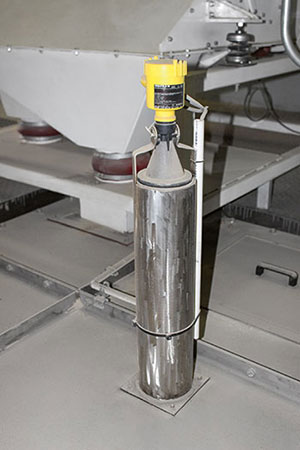
So the company tried out a whole range of different level sensors. First, they used a guided radar level gauge from another manufacturer. However, the return signal was always received with a delay, even when the signal damping parameter was set to zero. The next measuring principle that was tried out was the laser − a measuring device that basically operates according to the same functional principle as an ultrasonic level sensor. This solution was not satisfactory either. Dust always settled on the sensor immediately after the process started. This impaired the measurement within a very short time and even regular cleaning of the sensor did not help.
A breakthrough thanks to 80 GHz
RCL has been working with Vega for more than a decade and appreciates the excellent service provided by the local subsidiary of the Black Forest company. It also considers the dependability and high quality of Vega instruments unrivalled. For these reasons RCL placed great trust in the Vega team, but, at first, did not have high hopes that there would be a solution for this difficult measuring situation.
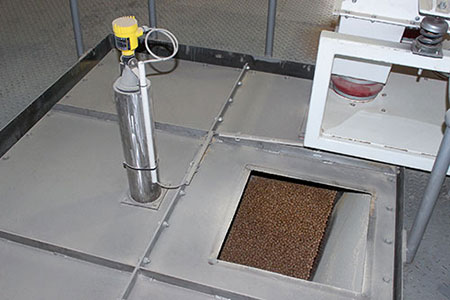
Vega proposed a trial run with Vegapuls 69, a radar level transmitter that was still quite new at the time. The higher, 80-GHz frequency considerably extended the spectrum of applications for radar level measurement technology. An essential aspect of this success is the fact that the measuring instrument only requires an opening angle of 3° (previously 10°), which allows the measuring beam to glide right past internal fixtures or build-up on the vessel wall. In practice, the significantly tighter focusing of the transmitted signal offers a whole range of advantages, the most important being that the actual measuring signal can be better separated from interference, allowing even the smallest reflection signals to be detected.
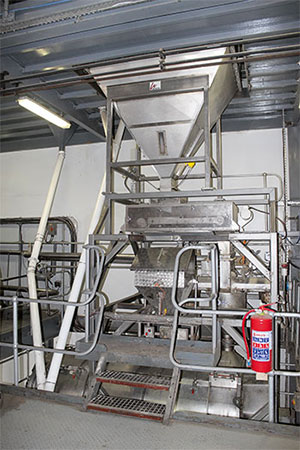
Nevertheless, RCL Foods was particularly concerned about the low height of the container (only 2 metres) and the effective measuring range, which at 1,5 metres was even smaller. This is a problem that many users are familiar with, especially in applications with small apparatuses and vessels, for example in technical centres or pilot plants. The blocking distance (dead band) of the sensor, the size and design of the antenna or the measurement uncertainty at the bottom of the vessel normally pose some difficulties when it comes to obtaining a reliable measuring signal.
Although Vegapuls 69 has a measuring range of up to 120 metres, it also copes well with small distances, such as those in the storage container of the South African company. By using a transmission frequency 3 times higher, the antenna can be 3 times smaller and still achieve nearly the same degree of signal focusing. As a result, much smaller process fittings are possible. At the same time, it also considerably reduces the interfering signals generated at close range. Despite the short wavelength of Vegapuls 69, the sensor is non-sensitive to soiling and build-up. This is achieved primarily by an adaptation of the sensitivity in the area near the sensor. Special processing of the reflections in the close range also makes it possible to reduce the influence of interference signals directly in front of the antenna system. Noise in the close range is thus reduced and signal sensitivity increased.
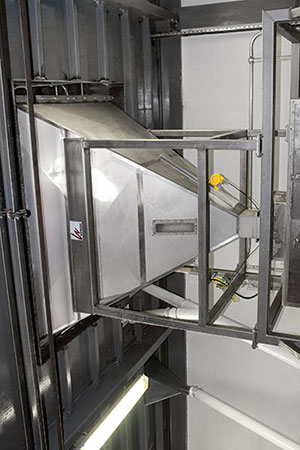
Conclusion and outlook
During installation it was necessary to use the existing mounting sockets wherever possible, without any modifications. This was not optimal, but due to the very good focusing of the sensor there were hardly any interfering reflections. After installation, the instrument was quickly set up via Bluetooth and smartphone. The measurement team was positively surprised by the high quality of the measured signals. Now, the level in the pellet container is reliably measured and can be kept constant and the continuous process of coating the food pellets now runs smoothly. Dust deposits from the dog food are also no problem for Vegapuls 69. According to the company, the sensor has not been touched since it was installed two years ago, neither for cleaning nor for maintenance. The level signal is reliable and accurate, ensuring production of a balanced dog food mix.
| Tel: | +27 11 795 3249 |
| Email: | [email protected] |
| www: | www.vega.com/en/home_za |
| Articles: | More information and articles about VEGA Controls SA |

© Technews Publishing (Pty) Ltd | All Rights Reserved